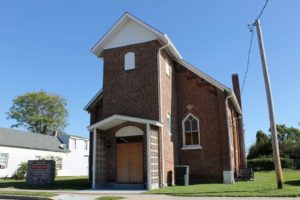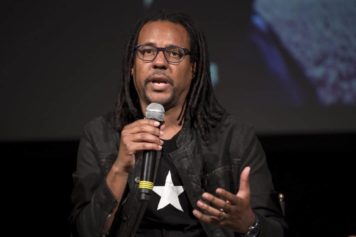By Dontaira Terrell
According to oral tradition, sometime in the 1820s at least 11 Black families both “free” and enslaved settled in the state of Illinois. Traveling from St. Louis, Mo. and through the Mississippi River, their journey ended in Brooklyn, Ill., leading to the establishment of the first Black municipality in the United States.
Traditional stories suggest Priscilla and John Baltimore led the small group into this pioneering settlement, which included John and Matilda Anderson, Nicholas Carpenter, Russell Cox, Elizabeth and James Singleton, Phillip Sullivan and Mrs. Wyatt. As a “freed” slave, Priscilla set out to create a community based on religious principles set forth by her former master who was a Methodist minister that granted her purchased freedom.
Known as the “Mother of Black Brooklyn,” Priscilla Baltimore hoped to create a safe haven for other enslaved Africans. In her efforts, both her and John established a meeting space for the town’s families and the missionary minister from the African Episcopal Church, Bishop William Quinn. After meeting and discussing the logistics, Brooklyn A.M.E Church later renamed to Quinn Chapel A.M.E. was established in 1825.
The church not only served as a community pillar, but also became an integral part in the formation of the Underground Railroad by serving as a major hub throughout the state of Illinois. Ironically, many of the tunnels that once concealed enslaved Africans still exist today below the framework of the church.
With the town’s location playing a vital role in solidifying an abundance of agricultural opportunities, it allowed many of the residents to become financially independent. Some of the laborer jobs consisted of brick masons, carpenters and boatmen but due to Illinois Black Laws (also known as Black Codes) the economic activities made available to Blacks during this time were extremely limited.
As part of joining the Union in 1819 Black Laws were instituted statewide, keeping a tight reign on the professional occupations that Blacks could pursue. It also confined several other aspects in their lives including but not limited to: the inability to vote, testify in the court of law, file suit against whites, carry firearms or assemble in groups of three or more without running the risk of being severely beaten or jailed. Essentially all rights were either highly controlled or completely eliminated.
Similar to previous tales in American history an all Black community became a town infiltrated by a group of five white men who strategically mapped out various parts of land throughout the pioneering settlement and selling it off to other white colonizers. Their presence was widely known and felt, as they were the dominating force behind the township due to the restrictions of Black voting rights.
Although Brooklyn officially became incorporated in 1873, it wasn’t until 1886 when Black residents were able to regain political control due in part to Black voters being the majority of the local constituency.
Following the regain of political control, the name Lovejoy was adopted and became synonymous with the town in order to remain disassociated with a nearby white community sharing the same name. Lovejoy was derived to commemorate the legacy of the slain abolitionist Elijah J. Lovejoy, murdered by a pro-slavery group while trying to defend the landmark of his anti-slavery newspaper, The Saint Louis Observer.
In spite of the remarkable history, many townspeople abandoned the small town throughout the 20th century. However, fast-forward to present day where the University of Illinois archaeologists and scholars such as Sundiata Keita Cha-Jua, Associate Professor of history as well as longtime citizens have joined forces. Their primary goal is to sustain the historical significance of the earliest town assimilated by Blacks within the United States; affectionately known as Brooklyn, Ill.



